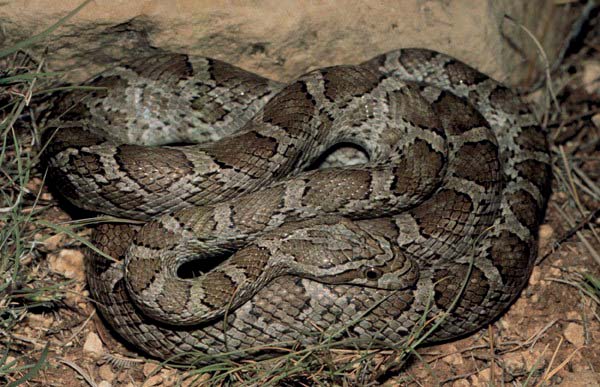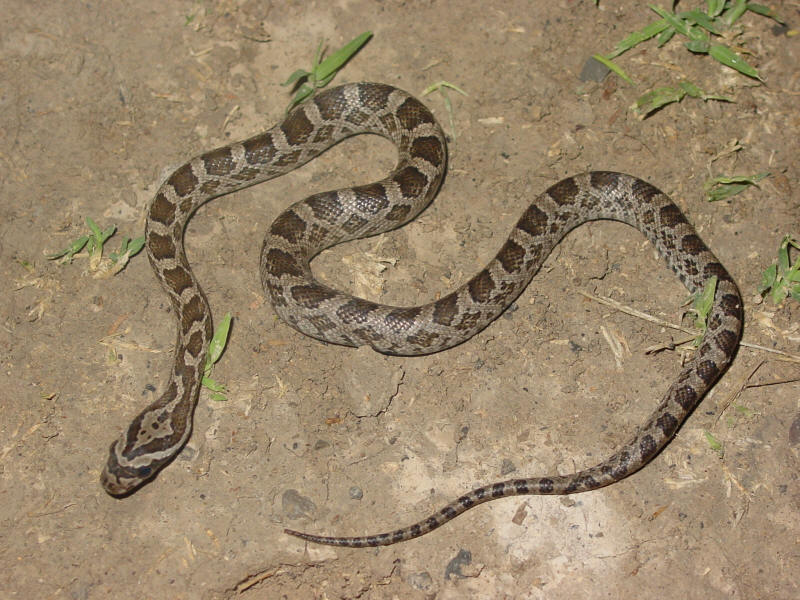Post by Ceratodromeus on May 29, 2015 1:03:32 GMT 5

Scientific classification:
Kingdom: Animalia
Phylum: Chordata
Subphylum: Vertebrata
Class: Reptilia
Order: Squamata
Suborder: Serpentes
Family: Colubridae
Subfamily: Colubrinae
Genus: Pantherophis
Species: P. emoryi
Description: Standard coloration for the Great Plains rat snake is white or grey, with dark brown saddles that cover most of its body. This coloration leads some observers to mistake them for Gopher snakes(Pituophis). It can grow up to an impressive length of 122cm(4ft) in total length, though the species averages ~74cm(~2.4ft) and weigh 174g. Most healthy adults measure anywhere from 32-105cm(1-3.4ft) and weigh anywhere 30-430g.{1} There exists records taken by Anderson in 1965 of an individual measuring 152.4cm(5ft) but no voucher could be located to corroborate the record.{2}
Geographic range: As the name may suggest. the Great plains ratsnake can be found throughout most of the Midwestern United States, but have been documented as far west as Colorado, New Mexico, and even down into Mexico. These snakes can be found around wooded grasslands and meadows, where they spend most of their time foraging.{3}
Dietary habits: P. emoryi is an ectothermic specialist. They are particularly well known to predate on the nests of birds, taking eggs, hatchlings, and adults with great frequency.{4} The diet of the great plains rat snake also includes small rodents(mus, rattus), lizards, and frogs.
Reproduction: Mating occurs in the early Spring, with eggs (clutch size depends on the size of the female; as many as 25 for this species) being laid thirty days later, Hatching at In the late Sping. The young share the coloration of the adults, and are independant as soon as they hatch.

Young P. emoryi
References:
{1}Klug, Page E., Jennifer Fill, and Kimberly A. With. "Spatial Ecology of Eastern Yellow-Bellied Racer (Coluber constrictor flaviventris) and Great Plains Rat Snake (Pantherophis emoryi) in a Contiguous Tallgrass-Prairie Landscape." Herpetologica 67.4 (2011): 428-439.
{2}Daniel, Richard E. "Updated maximum size records for amphibians and reptiles from Missouri." Missouri herpetological association.(2011): 17.
{3}Sperry, Jinelle H., and Christopher A. Taylor. "Habitat use and seasonal activity patterns of the Great Plains Ratsnake (Elaphe guttata emoryi) in central Texas." The Southwestern Naturalist 53.4 (2008): 444-449.
{4}Klug, Page Elizabeth. Interactions between grassland birds and their snake predators: the potential for conservation conflicts in the Tallgrass prairie. Diss. Kansas State University, 2009.


